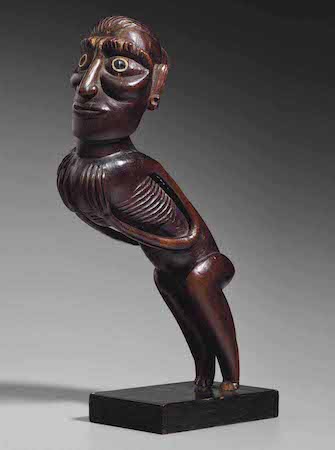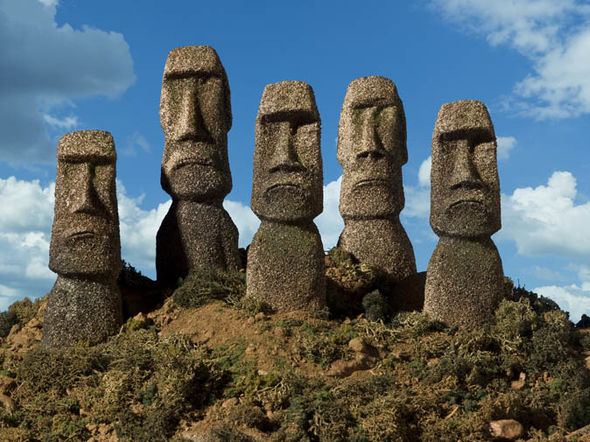Rapa Nui.
Rapa Nui.
Moai Kavakava Figure
Rapa Nui (Easter Island), a tiny spit of volcanic rock in the the vast South Seas, is the most remote inhabited place on the earth. It was first settled around 600 A.D. by Polynesian voyagers. By the time Dutch explorers discovered the island in 1722 (on Easter Sunday, hence the name) its people had been living in isolation for over a thousand years. During that time, the Rapanui had developed an entirely unique series of artistic traditions, which to this date remain an enigma.
To harness the power of the gods, as well as the island’s chiefs who were thought to be direct descendants of the gods, Rapanui artists created sculptures of diverse supernatural beings, believed to mediate between the divine and material worlds. Between approximately 700 - 1600, sculptors created nearly a thousand moai, some over 30 feet tall and weighing as much as 80 tons. In addition to moai, Easter Island artists created many other highly refined art forms in wood, stone and more delicate materials such as feathers, reeds and barkcloth.
Carved Stone Moai on Easter Island
Amongst the most striking of these forms are representations of Makemake, a hybrid bird-human figure and the most powerful of the island’s gods. Makemake was associated with the annual bird man ritual in which athletes competed on behalf of chiefs by descending a 1,000-foot cliff face before swimming to an offshore island in search of the first egg of a migratory seabird. The winner’s chief became the leader of the island for the following year.
Surrealist Map of the World, First Published in 1929
The art and dream-like nature of Rapa Nui became a hugely important influence on early 20th-century artists and the European avant-garde, in particular the Surrealists, many of whom collected Easter Island art and placed it at the center of their artistic practice. André Breton believed Rapa Nui to be a ‘modern Athens of Oceana’ and spent his prize-money for good results at school on an Easter Island figure which he reproduced in his 1928 Surrealist novel, Nadja. Max Ernst’s works often include birdmen inspired by Easter Island imagery. When the Surrealists published a Surrealist map of the world in 1929, they depicted Easter Island (Ile de Pâques) as being almost as large as Europe, despite it being little bigger than Staten Island.
Moai Kavakava Figure, Mid - Late 19th Century (Met Museum)




